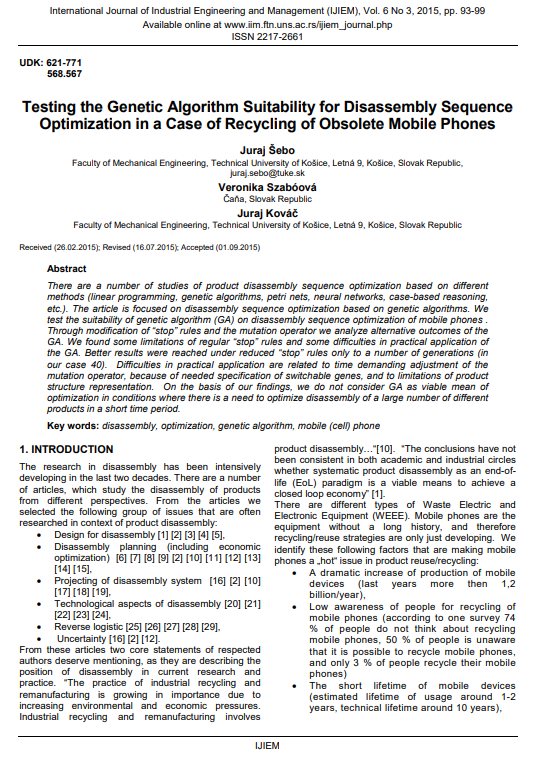Testing the Genetic Algorithm Suitability for Disassembly Sequence Optimization in a Case of Recycling of Obsolete Mobile Phones

Published 2015-09-30
abstract views: 21 // FULL TEXT ARTICLE (PDF): 0
Keywords
- bisassembly,
- optimization,
- genetic algorithm,
- mobile (cell) phone
How to Cite
Copyright (c) 2023 International Journal of Industrial Engineering and Management

This work is licensed under a Creative Commons Attribution 4.0 International License.
Abstract
here are a number of studies of product disassembly sequence optimization based on different methods (linear programming, genetic algorithms, petri nets, neural networks, case-based reasoning, etc.). The article is focused on disassembly sequence optimization based on genetic algorithms. We test the suitability of genetic algorithm (GA) on disassembly sequence optimization of mobile phones .Through modification of “stop” rules and the mutation operator we analyze alternative outcomes of the GA. We found some limitations of regular “stop” rules and some difficulties in practical application of the GA. Better results were reached under reduced “stop” rules only to a number of generations (in our case 40). Difficulties in practical application are related to time demanding adjustment of the mutation operator, because of needed specification of switchable genes, and to limitations of product structure representation. On the basis of our findings, we do not consider GA as viable mean of optimization in conditions where there is a need to optimize disassembly of a large number of different products in a short time period.
Article history: Received (26.02.2015); Revised (16.07.2015); Accepted (01.09.2015)

